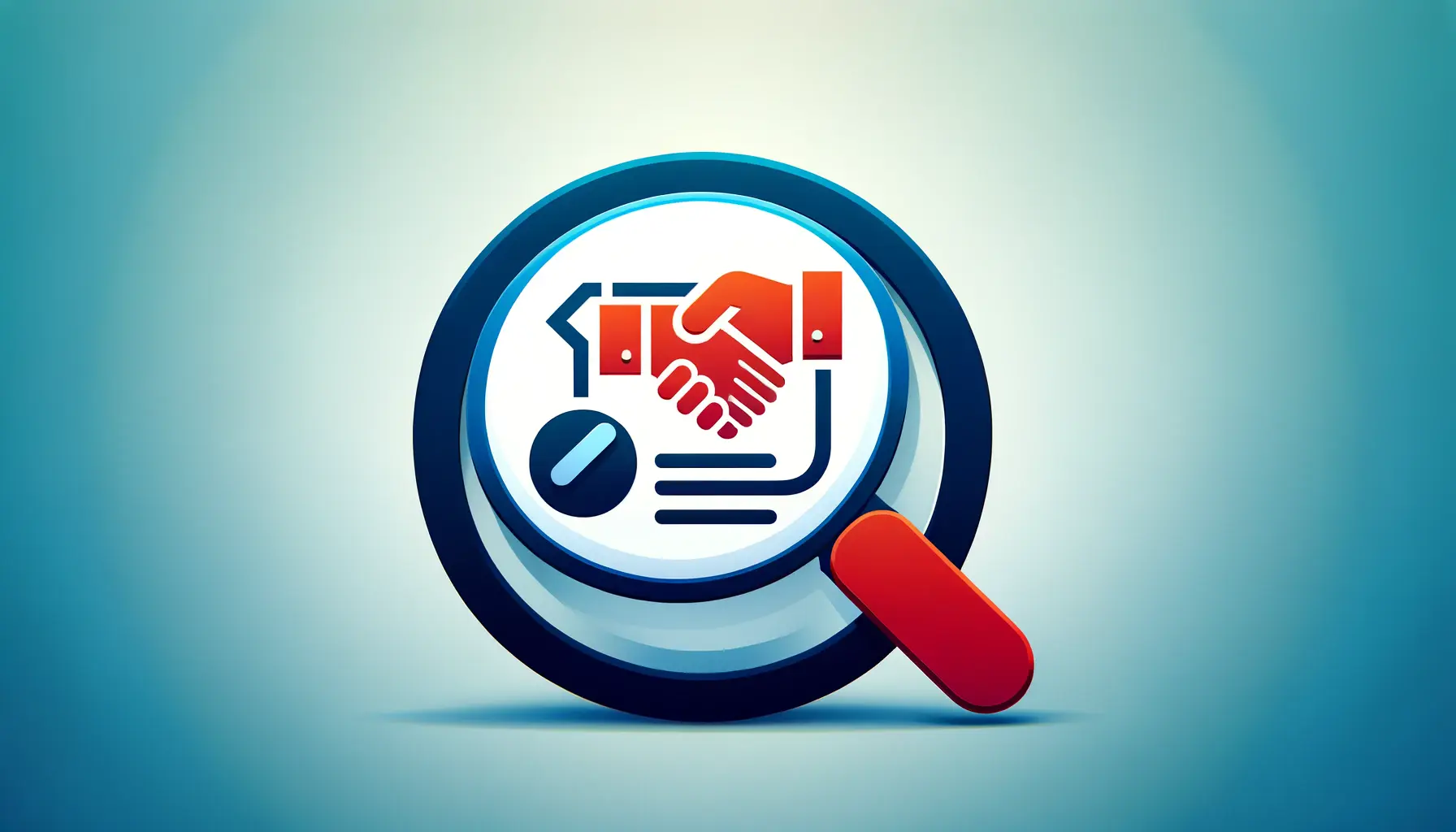In the digital age, where the competition among Software as a Service (SaaS) companies is fiercer than ever, standing out in the vast sea of online content requires more than just a groundbreaking product or service.
It demands a strategic approach to organic traffic enhancement, a cornerstone for sustainable growth and visibility in the digital marketplace.
Organic traffic, the lifeblood of digital marketing, refers to visitors who land on your website as a result of unpaid search results.
Unlike paid traffic, which is generated through advertisements, organic traffic is cultivated through effective Search Engine Optimization (SEO) practices, content marketing, and a deep understanding of your audience’s needs and search behaviors.
For SaaS companies, the challenge is not just to attract any traffic, but to draw in the right audience that is likely to convert into paying customers.
This involves a multifaceted strategy that combines technical SEO, quality content creation, and continuous optimization based on data-driven insights.
The goal is to enhance your online presence, making your SaaS solution easily discoverable by potential clients actively searching for solutions you offer.
By focusing on organic traffic enhancement, SaaS companies can significantly reduce customer acquisition costs while building a loyal customer base and establishing authority in their niche.
- Understanding the Importance of Organic Traffic
- Key Strategies for Enhancing Organic Traffic
- Optimizing Your Website for Search Engines
- Link Building: Expanding Your Web Presence
- User Experience and Engagement
- Analytics and Continuous Improvement
- Local SEO for Global Reach
- Integrating Social Media into Your SEO Strategy
- Conclusion: Mastering Organic Traffic Enhancement for SaaS Companies
- FAQs: Enhancing Organic Traffic for SaaS Companies
Understanding the Importance of Organic Traffic
Organic traffic is not just a metric to boast about; it’s a reflection of your website’s health, relevance, and authority in the eyes of search engines and users alike.
For SaaS companies, where the sales cycle can be complex and the competition stiff, leveraging organic traffic is crucial for several reasons.
First, it provides a steady stream of potential customers who are already interested in the type of solutions you offer.
This pre-qualified nature of organic visitors leads to higher conversion rates compared to other traffic sources.
Additionally, organic traffic contributes to brand visibility and recognition, as users are more likely to trust and click on organic search results over paid advertisements.
Moreover, a strong organic presence signals to search engines that your content is valuable, relevant, and answers the queries of your target audience.
This not only improves your rankings but also enhances user experience, making it easier for potential customers to find and engage with your content.
In the long run, a focus on organic traffic can lead to sustainable growth, as it compels SaaS companies to continuously improve their offerings and content strategy to meet the evolving needs of their audience.
Key Strategies for Enhancing Organic Traffic
Enhancing organic traffic in the SaaS industry requires a blend of SEO best practices, content marketing, and user experience optimization.
It starts with a thorough understanding of your target audience and the keywords they use when searching for solutions like yours.
Keyword research, therefore, becomes the foundation of your SEO strategy, guiding the content you create and how you optimize your website’s technical elements.
Content is king in the realm of organic traffic.
For SaaS companies, this means creating high-quality, informative, and engaging content that addresses the pain points and questions of your target audience.
This could range from blog posts and articles to tutorials, case studies, and whitepapers.
The aim is to provide value to your visitors, establishing your company as a thought leader in your industry.
Additionally, ensuring your website is technically optimized for search engines – through fast loading speeds, mobile responsiveness, and structured data – is crucial for improving your organic search rankings and user experience.
Focusing on organic traffic enhancement is not just about attracting more visitors; it’s about attracting the right visitors who are more likely to engage with your SaaS product and become loyal customers.
Optimizing Your Website for Search Engines
At the core of organic traffic enhancement for SaaS companies lies the meticulous process of search engine optimization (SEO).
SEO is the catalyst that propels your website to the top of search engine results pages (SERPs), making it more visible to potential customers.
However, SEO for SaaS is not a one-size-fits-all strategy; it requires a tailored approach that addresses the unique challenges and opportunities within the SaaS sector.
Technical SEO: Laying the Foundation
Technical SEO involves optimizing the infrastructure of your website to improve its visibility in search engines.
This includes ensuring that your site is crawlable, implementing SSL for security, optimizing loading speeds, and making your site mobile-friendly.
A technically sound website not only ranks better but also provides a better user experience, encouraging visitors to stay longer and engage more deeply with your content.
- Site Speed: A fast-loading website is crucial for keeping potential customers engaged. Tools like Google’s PageSpeed Insights can help identify areas for improvement.
- Mobile Responsiveness: With the majority of searches now performed on mobile devices, a mobile-friendly website is essential for reaching your audience.
- Secure Sockets Layer (SSL): SSL encryption is a must-have for building trust with visitors and a ranking factor for Google.
- Crawlability: Use tools like Google Search Console to ensure that search engines can easily crawl and index your site.
On-Page SEO: Enhancing Content Visibility
On-page SEO focuses on optimizing the content and structure of your website pages to make them more attractive to search engines and users.
This includes using relevant keywords, optimizing meta tags, and creating quality content that addresses the needs of your audience.
- Keyword Optimization: Incorporate relevant keywords naturally into your titles, headings, and throughout the content to improve visibility for those searches.
- Meta Tags: Write compelling meta titles and descriptions to improve click-through rates from search engine results pages.
- Quality Content: Produce informative, engaging, and valuable content that addresses the specific needs and questions of your target audience.
Content Strategy: Building Authority and Trust
Content is the cornerstone of any successful SEO strategy, especially for SaaS companies.
Creating a robust content strategy involves understanding your audience’s needs and providing solutions through your content.
This not only helps in attracting organic traffic but also establishes your brand as an authority in your niche.
- Blog Posts: Regularly publish informative and engaging blog posts that cover topics relevant to your target audience.
- Case Studies: Showcase real-life examples of how your SaaS product has helped solve specific problems for your clients.
- Educational Content: Create tutorials, guides, and webinars that educate your audience about your product and its benefits.
Remember, the goal of your content strategy should not only be to attract traffic but to convert that traffic into leads and customers by providing real value.
Link Building: Expanding Your Web Presence
Link building is a critical component of SEO that involves acquiring hyperlinks from other websites to your own.
These backlinks are a key ranking factor for search engines, as they signal the credibility and authority of your site.
For SaaS companies, building a strong backlink profile can significantly enhance organic traffic by improving search engine rankings and driving referral traffic.
Creating Shareable Content
To attract high-quality backlinks, start by creating content that is informative, engaging, and valuable enough that other sites want to link to it.
This could include original research, comprehensive guides, or insightful industry analyses.
Shareable content not only attracts backlinks but also increases your brand’s visibility and authority in your industry.
Guest Blogging and Collaborations
Guest blogging on reputable sites in your industry can be an effective way to build backlinks and reach a wider audience.
Similarly, collaborations with influencers, industry leaders, or complementary businesses can lead to valuable backlink opportunities.
When selecting platforms or partners for guest blogging and collaborations, ensure they are reputable and relevant to your target audience.
Utilizing Social Media
Social media platforms can be powerful tools for promoting your content and securing backlinks.
By sharing your content on social media, you increase its visibility, which can lead to more organic shares and potentially backlinks from other websites.
Engaging with your followers and participating in industry conversations can also help build relationships that may result in backlinks.
- Content Promotion: Actively promote your content on social media to increase its reach and the likelihood of earning backlinks.
- Engagement: Engage with users and industry influencers on social media to build relationships and encourage them to share your content.
- Networking: Use social media to connect with other businesses and content creators in your industry for potential backlink opportunities.
Effective link building is not about the quantity of backlinks but the quality. Focus on earning backlinks from reputable, high-authority sites relevant to your industry.
User Experience and Engagement
Enhancing the user experience (UX) on your SaaS website is pivotal for retaining the organic traffic you attract.
A positive UX can significantly impact your site’s bounce rate, time on site, and ultimately, conversions.
For SaaS companies, where the product itself is digital, the website’s user experience offers a direct reflection of the quality and reliability of the service provided.
Website Design and Navigation
A well-designed website with intuitive navigation is essential for a positive user experience.
Ensure that your website is structured in a way that allows visitors to easily find the information they’re looking for.
A clean, uncluttered design with a logical navigation hierarchy can significantly reduce bounce rates and encourage visitors to explore your site further.
- Clear Navigation: Use clear, descriptive labels for navigation links and organize them logically.
- Responsive Design: Ensure your website design is responsive and provides a seamless experience across all devices.
Content Readability and Accessibility
The readability of your content plays a crucial role in user engagement.
Use headings, subheadings, bullet points, and short paragraphs to make your content easy to scan.
Additionally, ensure your website is accessible to all users, including those with disabilities, by following web accessibility guidelines.
- Font Size and Type: Use a readable font size and type to ensure your content is easily legible.
- Contrast: Ensure there is sufficient contrast between your text and background colors for readability.
Interactive Elements and Calls-to-Action (CTAs)
Incorporating interactive elements and clear CTAs can significantly enhance user engagement on your SaaS website.
Interactive elements such as quizzes, calculators, or interactive demos can provide value to your visitors while also encouraging them to engage with your content.
Clear, compelling CTAs guide users towards the next steps, whether it’s signing up for a free trial, scheduling a demo, or contacting sales.
- CTA Placement: Place CTAs strategically throughout your content and on key pages to guide users towards conversion.
- CTA Design: Design your CTAs to stand out and make it clear what action you want the user to take.
A focus on user experience and engagement not only helps retain organic traffic but also converts visitors into leads and customers by providing a seamless and enjoyable interaction with your SaaS platform.
Analytics and Continuous Improvement
Driving organic traffic to your SaaS website is an ongoing process that requires continuous monitoring, analysis, and optimization.
Leveraging analytics tools allows you to understand how visitors interact with your site, which strategies are working, and where there’s room for improvement.
By regularly analyzing your website’s performance, you can make data-driven decisions to enhance your SEO efforts and user experience, ultimately increasing organic traffic and conversion rates.
Utilizing Analytics Tools
Tools like Google Analytics provide invaluable insights into your website’s traffic, user behavior, conversion rates, and more.
By setting up goals and tracking conversions, you can see which pages are performing well and which ones need optimization.
Analytics tools also help you understand your audience better, including demographics, interests, and how they found your site, enabling you to tailor your content and marketing strategies more effectively.
- Track Key Metrics: Monitor metrics such as bounce rate, average session duration, and pages per session to gauge user engagement.
- Conversion Tracking: Set up conversion tracking to measure the effectiveness of your CTAs and the overall conversion path.
Identifying and Addressing SEO Issues
Regular SEO audits can help identify technical issues, content gaps, and optimization opportunities.
Tools like Google Search Console, SEMrush, or Ahrefs can highlight problems such as broken links, crawl errors, or pages with low keyword rankings.
Addressing these issues promptly ensures your site remains optimized for search engines and users alike.
- Technical SEO Audits: Conduct regular technical SEO audits to identify and fix issues that could be hindering your site’s performance.
- Content Optimization: Use keyword and content analysis tools to find opportunities for optimizing existing content or creating new, high-quality content.
A/B Testing for Optimization
A/B testing, or split testing, is a powerful method for optimizing your website’s elements, from headlines and content to CTAs and landing pages.
By testing different versions of a page or element, you can determine which variations perform better in terms of user engagement and conversions.
This data-driven approach allows for continuous improvement and optimization of your website’s user experience and SEO performance.
- Test Different Headlines: Experiment with different headlines to see which ones result in higher click-through rates.
- Optimize Landing Pages: Test different layouts, content, and CTAs on your landing pages to improve conversion rates.
Analytics and continuous improvement are crucial for staying ahead in the competitive SaaS market. By regularly analyzing your site’s performance and making informed optimizations, you can enhance your organic traffic and user engagement over time.
Local SEO for Global Reach
For SaaS companies looking to expand their reach both locally and globally, local SEO can be a powerful strategy.
While SaaS platforms often target a global audience, optimizing for local SEO can help capture targeted traffic from specific geographic locations.
This approach is particularly beneficial for SaaS businesses that offer localized services or have a physical presence in certain areas.
By optimizing for local search queries, you can attract highly relevant traffic, improve conversion rates, and enhance your overall online visibility.
Optimizing for Local Keywords
Incorporating local keywords into your website’s content, meta tags, and URLs is the first step in local SEO.
Identify the regions you’re targeting and include location-specific keywords in your SEO strategy.
This helps search engines understand the geographic relevance of your content, making it more likely to appear in local search results.
For SaaS companies, this could mean targeting keywords that combine your service offerings with specific cities, regions, or countries.
- Keyword Research: Use tools to research local keywords relevant to your SaaS offerings and target audience.
- Content Localization: Create content that addresses the specific needs and interests of your target regions.
Claiming Your Google My Business Listing
For SaaS companies with physical offices or locations, claiming and optimizing your Google My Business (GMB) listing is crucial.
A well-optimized GMB profile can improve your visibility in local search results and Google Maps, making it easier for potential customers to find and contact you.
Ensure your GMB listing includes accurate and up-to-date information, such as your business name, address, phone number, and website URL.
- Accurate Information: Keep your GMB listing information accurate and consistent with your website.
- Customer Reviews: Encourage satisfied customers to leave positive reviews on your GMB profile to enhance credibility.
Building Local Backlinks
Acquiring backlinks from reputable local websites can significantly boost your local SEO efforts.
These backlinks signal to search engines that your website is a credible and relevant source of information for users in specific geographic locations.
Collaborate with local businesses, participate in community events, or contribute to local publications to build a strong local backlink profile.
- Local Partnerships: Partner with other local businesses to earn backlinks and increase local visibility.
- Community Engagement: Engage with local communities and events to build relationships and earn backlinks.
Neglecting local SEO can result in missed opportunities for SaaS companies to connect with targeted local audiences and expand their customer base.
Integrating Social Media into Your SEO Strategy
Social media platforms offer a valuable avenue for SaaS companies to enhance their SEO efforts and drive organic traffic.
While social media signals do not directly influence search engine rankings, the visibility, engagement, and traffic generated from social media can indirectly benefit your SEO.
By integrating social media into your SEO strategy, you can expand your reach, engage with your target audience, and drive more traffic to your website.
Leveraging Social Media for Content Distribution
One of the key benefits of social media is its ability to amplify the reach of your content.
By sharing your blog posts, articles, and other valuable content on social media, you can attract more visitors to your site.
Utilize platforms where your target audience is most active to ensure your content is seen by potential customers.
Additionally, engaging with users and encouraging shares can further increase your content’s visibility and drive additional traffic to your website.
- Content Sharing: Regularly share your content on social media to increase its reach and attract more visitors to your site.
- User Engagement: Actively engage with users who interact with your content to build relationships and encourage further sharing.
Boosting Brand Awareness and Authority
Social media also plays a crucial role in building your brand’s awareness and establishing your authority in your industry.
By consistently sharing valuable content, participating in industry conversations, and engaging with your audience, you can position your SaaS company as a thought leader.
This increased brand visibility can lead to more organic search queries for your brand, enhancing your SEO efforts.
- Industry Conversations: Participate in relevant industry conversations on social media to showcase your expertise.
- Authority Building: Share insights, trends, and valuable content to establish your brand as an authority in your field.
Utilizing Social Listening for SEO Insights
Social listening tools can provide valuable insights into the topics, questions, and keywords that your target audience is interested in.
By monitoring conversations and trends on social media, you can identify content opportunities and gaps in your SEO strategy.
This information can guide your content creation efforts, helping you produce content that resonates with your audience and addresses their needs.
- Content Ideas: Use social listening to gather ideas for new content that addresses your audience’s interests and questions.
- SEO Optimization: Identify popular keywords and topics on social media to incorporate into your SEO strategy.
Integrating social media into your SEO strategy not only enhances your online visibility but also provides valuable opportunities to connect with your target audience and gather insights for content optimization.
Conclusion: Mastering Organic Traffic Enhancement for SaaS Companies
As the digital landscape continues to evolve, SaaS companies face the ongoing challenge of distinguishing themselves in a crowded market.
The key to sustainable growth and visibility lies in mastering organic traffic enhancement.
This comprehensive approach goes beyond mere search engine rankings, focusing on creating a valuable online presence that attracts, engages, and converts the target audience.
Strategic SEO: The Foundation of Organic Growth
At the heart of organic traffic enhancement is a strategic SEO approach tailored to the unique needs of SaaS companies.
This involves a meticulous blend of technical optimization, content marketing, and user experience enhancements.
By focusing on these core areas, SaaS companies can improve their search engine visibility, attract a more targeted audience, and ultimately, drive higher conversion rates.
Content as a Catalyst for Engagement and Conversion
Content remains a critical driver of organic traffic, serving as the bridge between SaaS companies and their potential customers.
High-quality, informative, and engaging content not only improves SEO performance but also establishes the company as a thought leader in its industry.
Through strategic content marketing, SaaS companies can effectively address the pain points of their audience, providing solutions that lead to increased engagement and conversion.
Continuous Optimization: The Path to Lasting Success
The digital market is ever-changing, and so are the strategies to enhance organic traffic.
Continuous optimization, powered by analytics and insights, allows SaaS companies to adapt to these changes, refine their strategies, and maintain a competitive edge.
By regularly analyzing performance data, identifying areas for improvement, and testing new approaches, SaaS companies can ensure their organic traffic strategies remain effective and aligned with their business goals.
- Utilize analytics tools to monitor key performance indicators and user behavior.
- Conduct regular SEO audits to identify and address technical issues.
- Engage in A/B testing to optimize website elements and content for better performance.
Integrating Social Media for Enhanced Visibility and Engagement
In today’s digital age, social media is an indispensable tool for enhancing organic traffic.
By integrating social media into their SEO strategy, SaaS companies can extend their reach, engage with their audience on a more personal level, and drive additional traffic to their website.
Through content sharing, brand awareness campaigns, and social listening, SaaS companies can leverage social media to complement their organic traffic enhancement efforts effectively.
In conclusion, enhancing organic traffic for SaaS companies is a multifaceted endeavor that requires a strategic approach, continuous optimization, and an understanding of the target audience’s needs.
By focusing on SEO, content marketing, user experience, and social media integration, SaaS companies can attract more qualified traffic, improve their online visibility, and achieve sustainable growth in the competitive digital marketplace.
Want your website to top Google search rankings? Leave the SEO to our professional agency!
FAQs: Enhancing Organic Traffic for SaaS Companies
Explore commonly asked questions about boosting organic traffic for SaaS platforms, offering insights into effective strategies for growth.
SEO optimizes your website to rank higher in search results, making your SaaS more visible to potential customers actively searching for your solutions.
Yes, by attracting high-quality leads through organic search, SEO significantly lowers customer acquisition costs compared to paid advertising channels.
Content marketing boosts organic traffic by engaging and educating your target audience, establishing your authority, and improving search engine rankings.
Focus on keyword research, on-page optimization, quality content creation, and building a strong backlink profile to improve your site’s organic visibility.
SEO results vary, but typically, it takes several months to see significant improvements in organic traffic and search engine rankings for your SaaS.
While not a direct ranking factor, social media can amplify content reach, engage audiences, and drive traffic back to your site, indirectly boosting SEO.
Local SEO helps SaaS companies target geographic-specific markets, improving visibility among local audiences and attracting more relevant site visitors.
Analytics provide insights into user behavior and SEO performance, enabling SaaS companies to make data-driven decisions for continuous traffic improvement.
















